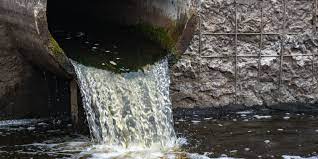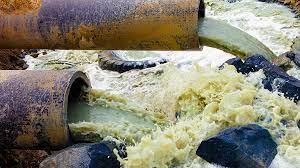Liquid wastes management is a critical aspect of maintaining a sustainable and healthy environment. With the rise in population, urbanization, and industrialization, the generation of liquid waste has significantly increased, posing numerous environmental and health hazards.
Proper management of liquid waste is essential to minimize adverse impacts on ecosystems, public health, and the overall quality of life. This article highlights the importance of managing liquid wastes and emphasizes the need for efficient waste management practices.
Managing liquid wastes is crucial for protecting our environment. Improper disposal of liquid wastes, such as untreated sewage, industrial effluents, and agricultural runoff, can contaminate water bodies, soil, and air, leading to ecosystem degradation.
This contamination harms aquatic life, disrupts natural habitats, and can cause long-term damage to the ecosystem’s biodiversity. By implementing effective liquid waste management strategies, we can mitigate the pollution and safeguard the environment for current and future generations.
Liquid waste contains a range of harmful substances, including pathogens, chemicals, and heavy metals, which can pose significant risks to human health. Improperly managed liquid waste can contaminate drinking water sources, leading to waterborne diseases and outbreaks.
Additionally, the release of hazardous chemicals into the environment can result in air pollution, soil contamination, and direct exposure to toxins, endangering the health of both humans and wildlife. Proper management and treatment of liquid waste minimize these risks and help maintain public health.
Liquid wastes often contains valuable resources that can be recovered and reused, thereby reducing the strain on natural resources. Wastewater treatment facilities can employ advanced technologies to extract energy, nutrients, and water from liquid waste. For instance, anaerobic digestion of organic waste can produce biogas, which can be utilized as a renewable energy source.
Similarly, nutrient-rich wastewater can be treated and used for agricultural irrigation, conserving freshwater resources. By managing liquid waste effectively, we can harness these opportunities for resource recovery and promote a circular economy.
Governments and regulatory bodies have established guidelines and regulations to ensure proper handling and disposal of liquid wastes. Compliance with these regulations is crucial for businesses, industries, and municipalities to avoid legal repercussions.
By implementing sound waste management practices, organizations can meet the required standards, protect their reputation, and contribute to sustainable development. Moreover, adhering to regulatory frameworks helps prevent environmental accidents and associated financial liabilities.
Liquid waste management plays a vital role in achieving long-term sustainability goals. Sustainable development aims to balance economic growth with environmental protection and social well-being. Effective waste management practices align with this vision by minimizing pollution, conserving resources, and promoting a circular economy.
Integrating sustainable waste management into policies, strategies, and practices is crucial for building resilient communities and ensuring a sustainable future. Managing liquid waste is of utmost importance for environmental preservation, public health, resource conservation, regulatory compliance, and long-term sustainability.
It requires collaborative efforts from governments, industries, communities, and individuals to implement effective waste management strategies, including source reduction, proper treatment, and responsible disposal. By recognizing the significance of managing liquid waste and taking proactive steps, we can create a cleaner, healthier, and more sustainable environment for generations to come.
Ways To Manage Liquid Wastes Properly

Managing liquid waste properly is essential to protect the environment and human health. Here are some ways to manage liquid waste effectively:
1. Source Reduction
The most effective way to manage liquid waste is to minimize its generation. Encourage practices that reduce waste production, such as using fewer hazardous chemicals or implementing water conservation measures.
2. Recycling and Reusing
Whenever possible, recycle or reuse liquid waste. For example, wastewater can be treated and reused for irrigation or industrial processes. Recycling reduces the strain on natural resources and minimizes the amount of waste that requires disposal.
3. Wastewater Treatment
Implement appropriate treatment processes for wastewater before it is released into the environment. This helps remove contaminants and reduce the environmental impact. Common wastewater treatment methods include physical, chemical, and biological processes.
4. Septic System Maintenance
If you have a septic system, ensure regular inspection and maintenance. Pumping the septic tank at appropriate intervals prevents overflows and contamination of groundwater or surface water.
5. Stormwater Management
Properly manage stormwater runoff to prevent pollution of water bodies. Install stormwater management systems like retention ponds, infiltration systems, or bioswales to filter and treat runoff before it enters natural waterways.
6. Hazardous Waste Disposal
If you have hazardous liquid waste, such as chemicals or oils, follow proper disposal procedures. Contact local waste management authorities or specialized companies to handle and dispose of hazardous waste safely.
Read Also: Kitchen Wastes Complete Management Guide
7. Public Education and Awareness
Educate the public about the importance of proper liquid waste management. Encourage responsible practices, such as avoiding improper disposal down drains or toilets, and promote recycling and reuse whenever possible.
8. Regulatory Compliance
Comply with local, regional, and national regulations regarding liquid waste management. These regulations often provide guidelines for proper handling, treatment, and disposal of various types of liquid waste.
9. Industrial Best Practices
Industries should adopt best practices for liquid waste management. This includes implementing efficient processes, employing effective treatment technologies, and complying with relevant regulations and standards.
10. Collaboration and Partnerships
Foster collaborations between government bodies, industries, and communities to develop comprehensive liquid waste management strategies. Promote information sharing, research, and innovation to find more sustainable and efficient ways to manage liquid waste.
11. Proper Storage
Store liquid waste in appropriate containers or tanks that are designed to prevent leakage or spillage. Use secondary containment systems to provide an extra layer of protection in case of accidental releases.
12. Monitoring and Testing
Regularly monitor and test liquid waste to ensure compliance with regulatory standards and to identify any potential issues. This includes testing for contaminants, pH levels, or other parameters that may affect the environment or public health.
Read Also: The Neal Recycling Initiative
13. Training and Awareness
Provide training and awareness programs to employees or individuals handling liquid waste. Educate them about proper handling procedures, safety protocols, and the potential environmental and health risks associated with improper waste management.
14. Gray Water Recycling
Implement gray water recycling systems to reuse wastewater generated from non-toilet sources, such as sinks, showers, or laundry. This can be used for non-potable purposes like toilet flushing or landscape irrigation, reducing the demand for fresh water.
15. Zero Liquid Discharge (ZLD)
In certain industries or applications, implementing ZLD systems can be effective. ZLD aims to eliminate the discharge of liquid waste entirely by treating and recovering all water, leaving only solid waste behind.
16. Composting
If you have organic liquid waste, such as food waste or agricultural runoff, consider composting. This natural process converts organic waste into nutrient-rich compost that can be used in gardening or agriculture, reducing the need for chemical fertilizers.
17. Rainwater Harvesting
Collect and store rainwater for various non-potable purposes. This helps reduce the strain on freshwater resources and minimizes the amount of wastewater generated.
18. Green Infrastructure
Implement green infrastructure techniques, such as constructed wetlands or vegetated swales, to treat and manage liquid waste. These nature-based systems can help filter and purify water while providing additional benefits like wildlife habitat and aesthetic appeal.
19. International Standards
If your organization operates internationally, consider adhering to internationally recognized standards for liquid waste management, such as ISO 14001 or the Global Reporting Initiative (GRI) guidelines. These standards provide frameworks for sustainable waste management practices.
20. Continuous Improvement
Regularly review and assess your liquid waste management practices to identify opportunities for improvement. Stay updated with new technologies, regulations, and best practices in the field to enhance the efficiency and effectiveness of your waste management efforts.
21. Community Engagement
Engage with local communities and stakeholders to raise awareness about the importance of proper liquid waste management. Foster a sense of responsibility and encourage active participation in waste reduction, recycling, and proper disposal practices.
22. Innovative Technologies
Explore and adopt innovative technologies for liquid waste management. These may include advanced treatment systems, membrane filtration, electrocoagulation, or other emerging technologies that can improve the efficiency and effectiveness of waste treatment processes.
24. Industrial Symbiosis
Explore opportunities for industrial symbiosis, where one industry’s waste becomes another industry’s input. By establishing collaborations and resource-sharing networks, industries can minimize waste generation and find alternative uses for liquid waste streams.
25. Audit and Compliance
Conduct regular audits to assess your liquid waste management practices for compliance with applicable regulations and standards. Identify any gaps or areas for improvement and take necessary corrective actions to ensure ongoing compliance.
26. Life Cycle Assessment
Perform life cycle assessments of liquid waste management processes to evaluate their environmental impact holistically. This analysis considers the entire life cycle of waste, from generation to disposal, and helps identify opportunities for improvement and optimization.
27. Financial Incentives
Governments and organizations can provide financial incentives or grants to encourage businesses and individuals to invest in sustainable liquid waste management practices. These incentives can help offset the initial costs and promote widespread adoption of environmentally friendly technologies and practices.
28. Research and Development
Invest in research and development to explore new and improved methods of liquid waste management. Support scientific studies and innovation to find more efficient, cost-effective, and environmentally friendly solutions for waste treatment and disposal.
29. Environmental Management Systems
Implement environmental management systems, such as ISO 14001, within organizations to establish a structured approach to liquid waste management. These systems help identify environmental aspects, set objectives and targets, and facilitate continuous improvement in waste management practices.
30. Collaboration with Water Authorities
Collaborate with local water authorities to understand and align with their water management plans and initiatives. By working together, you can ensure that liquid waste management practices are in line with broader water resource management goals.
31. Public-Private Partnerships
Foster partnerships between public and private entities to pool resources, knowledge, and expertise for effective liquid waste management. Such collaborations can lead to innovative solutions, shared infrastructure, and more comprehensive waste management strategies.
Always consult local regulations and guidelines specific to your region to ensure compliance and safety in managing liquid waste.
By adopting these practices and continually striving for improvement, you can contribute to the responsible and sustainable management of liquid waste. Remember that each situation may have specific requirements, so tailor your approach accordingly and seek expert advice when needed.
Remember, the key to managing liquid waste properly is to adopt a holistic approach that focuses on waste reduction, recycling, responsible treatment, and safe disposal. By implementing these strategies and staying informed about new developments in waste management practices, we can minimize the environmental impact of liquid waste and protect our ecosystems and communities.
Read Also: How to Find Investors for Wholesale Real Estate

